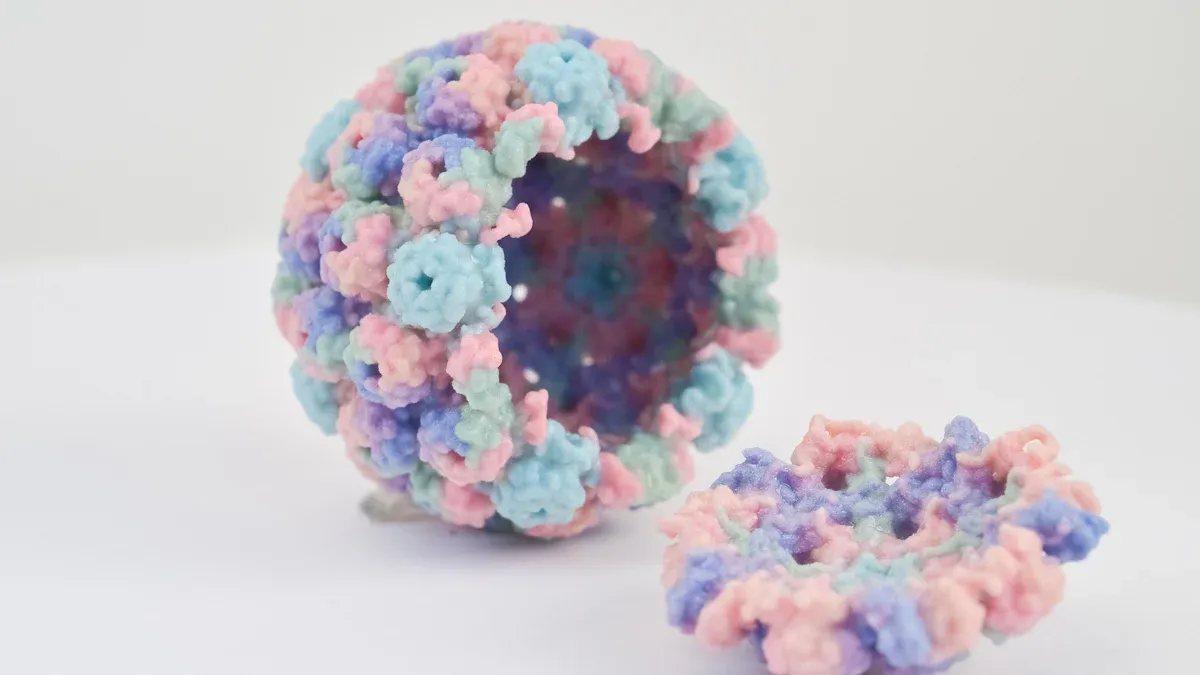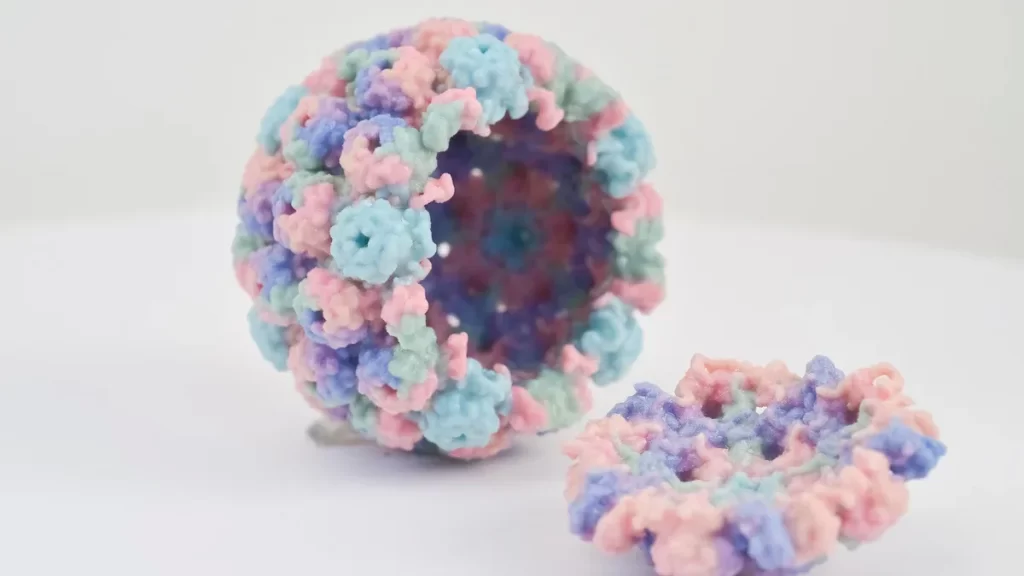News & Events
Single Stranded Binding Proteins Always Protect MBP Never Does

When you work with single-stranded DNA, you need the right binding proteins. Single stranded binding proteins always protect single-stranded DNA by binding tightly and stopping damage. You cannot use maltose binding protein for this job, because it does not bind or protect DNA. Imagine you set up a DNA replication experiment. If you pick the wrong binding protein, your DNA may degrade or fold into unwanted shapes. Understanding how each binding protein works helps you make the best choice for your experiment.
Key Takeaways
- Single-stranded binding proteins (SSBs) protect single-stranded DNA from damage during replication and repair. Use them to ensure DNA stability.
- Maltose binding protein (MBP) is not suitable for DNA protection. It is designed for protein purification and should be used as a fusion tag.
- Choosing the right binding protein is crucial for successful experiments. Match SSBs for nucleic acid protection and MBP for protein purification.
- SSBs prevent single-stranded DNA from folding into loops or degrading, which is essential for accurate DNA replication.
- Always confirm the binding affinity of your chosen protein to ensure effective results in your molecular biology applications.
Nucleic Acid Protection

What Protection Means
The primary role of single-strand DNA-binding (SSB) proteins is to protect ssDNA from nucleases during DNA replication, recombination, and repair.
When you work with single-stranded dna, you face a big challenge. This form of dna is fragile and can break down quickly. Protection in molecular biology means keeping single-stranded dna safe from damage. You need to stop nucleases from cutting the dna and prevent it from folding into unwanted shapes. SSB proteins do this by binding to the dna. They cover the exposed strands and keep them stable.
- SSB proteins stabilize and protect separated single strands of dna during unwinding.
- They bind in a sequence-independent way, which helps dna replication happen smoothly.
You will often see SSB proteins in action when you set up experiments that need stable single-stranded dna. Their dna binding ability keeps the strands from sticking together or forming loops. This protection is key for many lab procedures.
Importance in DNA Replication
During dna replication, the double helix unwinds. This process creates single-stranded dna that needs protection. SSB proteins attach to these strands right away. Their binding stops the strands from rejoining or forming knots. You need this step for accurate dna replication. Without proper dna binding, polymerases cannot copy the dna correctly.
Single-stranded dna is also important in dna repair. When damage happens, the cell exposes single strands to fix errors. SSB proteins use their dna binding skills to keep these strands safe. They also help recruit other proteins, like polymerases and primases, to the site. This teamwork ensures that dna replication and repair happen without mistakes.
If you skip SSB proteins, your single-stranded dna may degrade. Nucleases can cut the dna, and chemical agents can cause more damage. RPA, a special type of SSB, binds with high affinity and works with other proteins to keep the replication fork stable. This level of dna binding is essential for genetic integrity.
You can see how crucial dna binding and protection are for every step of dna replication. By using the right binding proteins, you make sure your experiments succeed and your genetic material stays safe.
Single Stranded Binding Proteins

SSB Mechanism
Single-stranded binding protein plays a vital role in your experiments with single-stranded dna. When you expose dna to heat or enzymes, the double helix unwinds and forms single strands. These strands become unstable and can fold into loops or hairpins. You need single-stranded binding protein to stop this from happening.
Single-stranded binding protein uses a unique mechanism called conformational selection. This means the protein recognizes and binds to specific shapes of single-stranded dna. The protein wraps tightly around the dna, covering it and blocking unwanted folding. This conformational mechanism keeps the dna straight and ready for further processing.
You can see how single-stranded binding protein works at the molecular level:
- The protein binds to single-stranded dna with high affinity.
- The OB-fold domain of the protein attaches to the dna, while the flexible tail interacts with other proteins.
- The binding is dynamic. The protein can move along the dna, following the replication fork.
- Electrolyte concentration affects the binding equilibrium, changing how tightly the protein holds the dna.
- The protein prevents secondary structure formation by wrapping the dna and stopping bulges or loops from forming.
- Molecular dynamics studies show that the protein and dna change shape together, using conformational selection to keep the dna stable.
- The protein can reposition itself along the dna, using a two-step mechanism that involves bulges moving along the surface.
🧬 Tip: Single-stranded binding protein protects the most vulnerable parts of your dna, such as the 3′ overhangs, from damage and unwanted processing.
You rely on single stranded binding proteins to maintain genome stability. These proteins act as guardians, using conformational selection and dynamic binding to keep your single-stranded dna safe during every step of dna replication.
SSB Applications
You use single-stranded binding protein in many molecular biology applications. The protein’s conformational mechanism and dynamic binding make it essential for dna replication, recombination, and repair.
Single-stranded binding protein prevents single-stranded dna from reannealing or forming secondary structures. This keeps the dna accessible for enzymes like polymerases and helicases. The protein also helps load other proteins onto the dna, supporting the entire replication process.
Here are some common applications for single-stranded binding proteins:
- DNA replication: The protein binds to unwound single-stranded dna, keeping it straight and ready for copying.
- DNA repair: The protein covers exposed single-stranded regions, protecting them from nucleases and chemical damage.
- Recombination: The protein stabilizes single-stranded dna during strand exchange, helping genetic material mix safely.
- PCR and sequencing: The protein improves reaction efficiency by preventing secondary structure formation.
You can see the effectiveness of single-stranded binding protein in experiments:
| Experiment Description | Findings | Implications |
|---|---|---|
| Helicase assays with NS3h and E. coli SSB | Robust unwinding of a 40 bp substrate was observed when SSB was present. | SSB enhances the unwinding efficiency of helicases during DNA replication and repair processes. |
| Unwinding kinetics of NS3-4A with SSB | Nearly 4-fold higher product formation compared to conditions with PolyU. | SSB increases the processivity of DNA unwinding by the full-length NS3-4A construct. |
You should always choose single stranded binding proteins when you need to protect single-stranded dna. The conformational selection and dynamic binding mechanisms ensure that your dna remains stable and accessible. Bacterial ssb proteins, in particular, show strong dna binding and conformational dynamics, making them reliable for laboratory use.
Note: Single-stranded dna-binding proteins are not just for dna replication. You can use them in any application where you need to keep single-stranded dna safe and ready for further processing.
Single-stranded binding protein gives you control over the conformational state of your dna. The protein’s conformational selection, dynamic binding, and dna binding mechanisms work together to prevent degradation and secondary structure formation. This makes single stranded binding proteins a key tool in your molecular biology toolkit.
MBP Function
MBP as Fusion Tag
You often use maltose binding protein (MBP) as a fusion tag in recombinant protein expression. MBP belongs to the family of periplasmic binding proteins. These proteins show strong ligand binding and help you study ligand-protein interactions. When you attach MBP to your protein of interest, you increase its solubility and prevent it from forming aggregates. This approach works well in E. coli and other systems.
MBP acts as a chaperone. It keeps your protein in solution and protects it from degradation. You see high yields because MBP supports efficient translation and folding. The fusion tag also shields your protein from proteases. This protection helps you recover more active protein after purification.
- MBP fusion proteins remain active even after heat treatment.
- You get higher expression levels in many cell types.
- MBP increases the solubility of your target protein.
- The fusion tag prevents aggregation and loss of function.
MBP uses ligand binding to recognize maltose and related sugars. The protein has a specific binding site that interacts with the ligand. This ligand recognition relies on induced fit. The binding site changes shape when maltose binds, which increases binding affinity and specificity. You can use this property to study ligand-protein interactions in detail.
MBP fusion tags give you a reliable way to express and recover proteins that are hard to produce on their own. The induced fit mechanism at the binding site ensures that MBP holds onto maltose tightly, making it a valuable tool in protein engineering.
MBP in Protein Purification
You use MBP for protein purification because of its strong ligand binding to maltose. The binding site on MBP fits maltose with high binding affinity. This interaction depends on induced fit, where the protein changes shape to grip the ligand. You can take advantage of this property in affinity chromatography.
Here is how the process works:
- You express your protein as an MBP fusion in E. coli.
- You lyse the cells and apply the mixture to an amylose column.
- MBP binds to the amylose resin through its maltose binding site.
- You wash away unbound proteins.
- You elute your fusion protein by adding maltose, which competes for the binding site.
This method gives you high purity in a single step. MBP’s ligand binding and induced fit at the binding site make the process efficient. You often achieve 70–90% purity after one round of purification. The periplasmic binding proteins like MBP show strong ligand recognition, which helps you separate your protein from contaminants.
| Step | Action | Role of MBP |
|---|---|---|
| 1 | Bind to amylose resin | Uses ligand binding at the binding site |
| 2 | Wash away impurities | MBP remains attached due to high binding affinity |
| 3 | Elute with maltose | Maltose competes for the binding site, releasing MBP fusion |
MBP does not protect nucleic acids. You cannot use MBP for dna binding or nucleic acid protection. MBP specializes in ligand binding, not dna binding. The protein’s function centers on ligand recognition and induced fit at the binding site. You use MBP for biotechnological applications that require protein purification, not for dna binding or genome stability.
Remember: MBP is a periplasmic binding protein. It uses ligand binding and induced fit to interact with maltose at the binding site. You rely on these properties for protein purification, not for dna binding or nucleic acid protection.
You should choose MBP when you need to purify proteins or study ligand-protein interactions. The induced fit at the binding site gives you high binding affinity and specificity for maltose. MBP’s role in protein engineering depends on its ability to bind ligands, not on dna binding. You cannot use MBP to protect single-stranded dna, but you can use it to recover pure, active proteins for your experiments.
Functional Impact
Choosing Binding Proteins
You need to select the right binding proteins for your experiment. When you work with single-stranded dna, you should always use single stranded binding proteins. These proteins bind to single-stranded dna with high affinity and low specificity. This makes them perfect for dna replication, recombination, and repair. You can rely on them to keep your dna safe and stable during these processes.
- Single stranded binding proteins protect single-stranded dna from damage.
- They prevent unwanted folding and keep the dna ready for enzymes.
- You use them in experiments that need stable single-stranded dna, such as dna replication and repair.
You should not use maltose binding protein for nucleic acid protection. MBP does not bind to dna. It binds to maltose and helps you purify proteins. When you want to recover a protein from a mixture, you attach MBP as a tag. The MBP tag binds to maltose on a column, allowing you to separate your protein from others. This method works well for protein purification, not for dna replication or repair.
Tip: Always match the binding proteins to your experiment’s needs. Use single stranded binding proteins for nucleic acid protection. Use MBP for protein purification with maltose.
Experimental Outcomes
Your choice of binding proteins affects your results. If you use the wrong protein, your experiment may fail. Single stranded binding proteins keep single-stranded dna stable. This stability helps enzymes copy and repair dna without errors. Without these proteins, your dna may degrade or form loops, leading to mistakes.
| Aspect | Findings |
|---|---|
| RPA Functionality | Different functions of RPA are required for dna replication and repair. |
| Mutations in RPA | Mutations can lead to defects in either replication or repair, indicating specific interactions. |
| Binding to ssDNA | Altered binding to short ssDNA intermediates causes defects in dna repair but not in replication. |
You see that binding proteins play a key role in genome stability. Single stranded binding proteins, like hSSB1, protect single-stranded dna during dna replication and repair. They help enzymes find and process the dna correctly. If you do not use these proteins, your dna becomes more sensitive to damage.
MBP, on the other hand, gives you high purity when you purify proteins with maltose. It does not protect dna or help with genome stability. You use MBP when you want to recover a protein, not when you need to protect single-stranded dna.
- SSBs bind to single-stranded dna and keep it safe during dna replication.
- MBP binds to maltose and helps you purify proteins.
- The right binding proteins lead to successful experiments and stable genomes.
Single stranded binding proteins always protect single-stranded DNA, while MBP never does. You should choose your binding protein based on your experiment’s needs. For nucleic acid protection, use SSBs. For protein purification, select MBP.
To select the right binding protein, you can:
- Identify the DNA sequence that binds your protein.
- Use selection and analysis techniques to confirm binding.
- Examine binding affinities with statistical methods.
- Always match your protein choice to your application.
- Consider sample purity and avoid unnecessary enzymes during purification.
🧪 Careful selection of binding proteins helps you achieve reliable results and protects your samples.
FAQ
What do single stranded binding proteins (SSBs) do?
Single stranded binding proteins attach to single-stranded DNA. You use them to keep DNA safe during experiments. SSBs stop DNA from breaking or folding into loops. This protection helps you get accurate results in DNA replication and repair.
Can you use MBP to protect DNA?
No, you cannot use MBP to protect DNA. MBP binds to maltose, not DNA. You use MBP as a tag for protein purification. It does not help with DNA stability or protection in any experiment.
Why is DNA protection important in the lab?
DNA protection keeps your samples from breaking down. If you do not protect single-stranded DNA, nucleases can cut it. This damage can ruin your experiment. Using SSBs helps you keep DNA stable and ready for further steps.
How do you choose between SSB and MBP?
You choose SSB when you need to protect single-stranded DNA. You pick MBP when you want to purify proteins using maltose columns. Always match the protein to your experiment’s goal for the best results.
Are there experiments where you need both SSB and MBP?
Yes, you might use both in complex workflows. For example, you can protect DNA with SSB during replication, then use MBP to purify a protein made in the same experiment. Each protein has a unique job.

